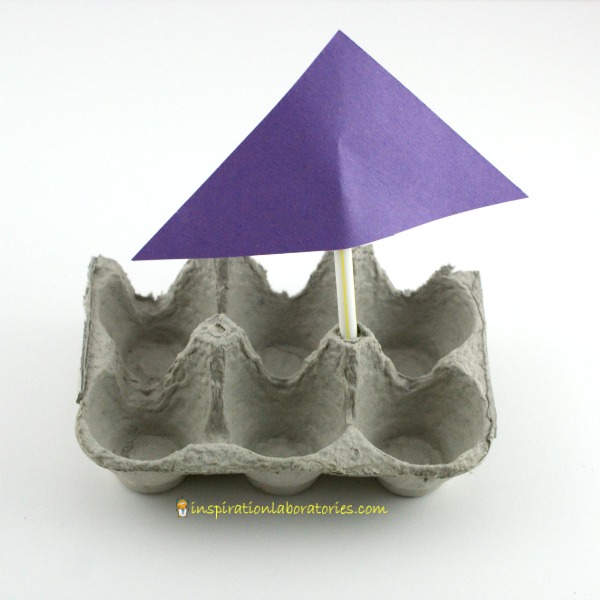How to Build a Boat: 25 Designs and Experiments for Kids
If you subscribe to the Inspiration Laboratories newsletter, you know we had fun making boats a while back. I’ve been collecting ideas for how to build a boat ever since. You’ll love these ideas. They are kid-friendly, doable, and you probably have the supplies for most of them on hand. I get commissions for purchases made through the affiliate links in this post.

How to Build a Boat

Materials to Consider
What materials can you use to make a boat that actually floats? Here’s a list to get you started:
- Paper (will it need to be waterproofed?)
- Foil
- Plastic container
- Cork
- Egg cartons
- Cardboard (will it need to be waterproofed?)
- Orange peel
- Straws
- Craft sticks
- Sticks from a tree or other pieces of wood
What other materials am I leaving out? Comment below and let me know.
More to Consider
What else do you need to construct the boat? String or something to fasten pieces together? Glue or tape? Will the boat fall apart once it’s placed in the water?
Our egg carton boat was simply made by placing a straw into the egg carton and taping on a piece of paper. It floated in the bathtub pretty easily. We didn’t test the sail. Would it actually work?
Who will the passengers be? What will the boat carry?
After building the boat, see how much weight it can hold. (Pennies are a good option for older kids to use.)
Ways to Build a Boat
Create a Boat Building Challenge
- Try this Cork Raft Building Challenge from Kitchen Counter Chronicles.
- Discover which materials make the best boats. Science Sparks shows you how.
- Design a speedboat and test to see if it will float like Creative Family Fun.
- Teach Preschool set up two boat building stations with different materials. Compare the designs and see how they’ll float.
- Allow your child to decide on the materials they’ll need to build a boat that floats as well as how they’ll design the boats. Planet Smarty Plants tells of their design process.
- Here’s a simple boat science experiment from East Coast Mommy. Build boats, test their buoyancy, and predict how many rocks it will take to sink them. Check out their materials and design.
- What unique materials could you use? The Craft Train made their boats using sponges and duct tape.
- Craftulate has 5 boat designs. I especially like the way they made the speedboats out of foam.
- Challenge your child to build a hydrofoil. How much weight can it hold before sinking? Kids Activities Blog has the instructions.
- Let you child be in charge of investigating different boat designs. Will a shell work for a boat? Fantastic Fun and Learning finds out.
Design a Boat Powered by Wind
- Learn how to make a paper boat from My Little 3 and Me. What types of paper work best?
- NurtureStore shows us 3 ways to make a sail boat. Pay attention to the design of the sail.
- Add some sparkle to your design. Mama Pappa Bubba made cork sail boats with sparkly sails.
- Create a boat from a juice box. hands on : as we grow has the plan.
- Make pool noodle boats like Frogs and Snails and Puppy Dog Tails.
- Build wax boats like these from Housing a Forest.
- Race duck tape boats across the water. Mess for Less tells us how.
- These ice boats made of natural materials from Reading Confetti are simply lovely.
Build a Boat Powered by Something Other Than Wind
- Make a self-propelled tug boat. Red Ted Art has the tutorial.
- Make a balloon powered egg boat. Capri+3 has instructions and a video to show you how.
- Or try this balloon powered boat from Life with Moore Babies.
- This baking soda powered boat from Science Sparks is sure to be a hit.
- Adventure in a Box builds a toy wooden paddle boat.
- Sail a boat down a homemade river like Gift of Curiosity.
Your Turn
Share a picture of your boats with me on Inspiration Laboratories on Facebook!
More Hands-On Science Ideas for Kids
- 20 Ways to Build a Rocket: Experiments and Crafts for Kids
- 10 Ways to Make a Volcano with Kids
- 8 Egg Drop Experiments plus ideas and tips for designing your own
Subscribe to our newsletter and get exclusive science explorations for young scientists in each issue.
This post was originally published on April, 28 2015.

Leave a Reply